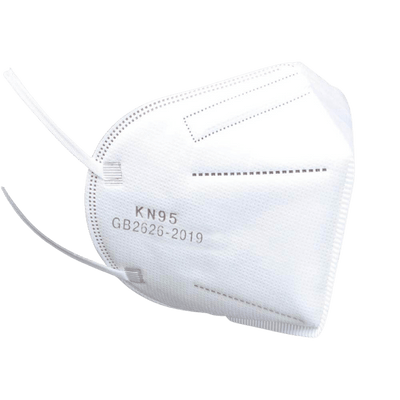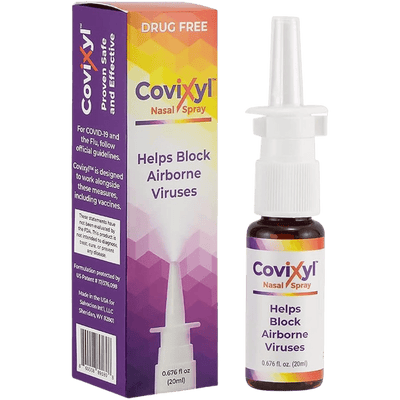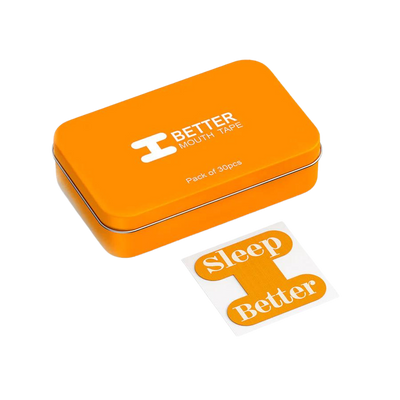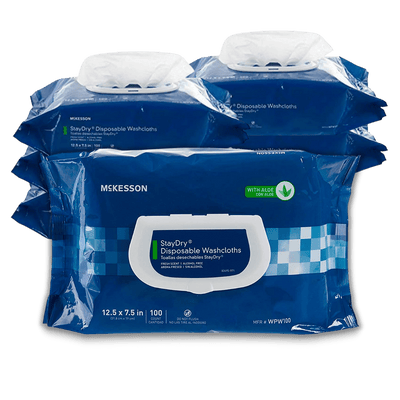Understanding the Differences Between Topical and Oral Pain Relievers: A Comprehensive Guide
Understanding the Differences Between Topical and Oral Pain Relievers
Introduction
Pain is a common discomfort that can greatly affect an individual's quality of life. Fortunately, there are various pain relievers available that can help manage and alleviate pain. When it comes to pain relief, two common options are topical and oral pain relievers. Understanding the differences between these two types of pain relievers is important in order to make informed decisions about which option is best suited for your needs. In this comprehensive guide, we will delve into the definitions, benefits, application methods, and considerations of both topical and oral pain relievers.
If you are seeking effective pain relief options, we encourage you to explore the wide range of high-quality health supplies offered by Hope Health Supply. They provide a variety of pain relievers and other health products that can help alleviate discomfort and improve your overall well-being.
Definition and Explanation of Topical Pain Relievers
Topical pain relievers are products that are applied directly to the skin to alleviate pain in specific areas. These products typically come in forms such as gels, creams, and patches.They work by targeting the specific area of pain and providing localized relief. One example of a common topical pain reliever is diclofenac gel. By applying a topical pain reliever to the affected area, you can experience targeted relief and minimize systemic side effects.
For instance, if you have a strained muscle in your shoulder, applying a topical pain reliever directly to the affected area can help reduce inflammation and provide localized relief. The pain reliever is absorbed through the skin and begins to work directly at the site of pain. This targeted approach allows for faster relief and avoids the potential side effects associated with oral pain relievers.
Definition and Explanation of Oral Pain Relievers
Oral pain relievers, on the other hand, are medications that are taken orally to relieve pain throughout the body. These medications are typically ingested and absorbed into the bloodstream through the digestive system. There are different types of oral pain relievers, including nonsteroidal anti-inflammatory drugs (NSAIDs) and acetaminophen. Common examples of oral pain relievers include ibuprofen, aspirin, and acetaminophen. Oral pain relievers are widely available and can effectively provide relief for various types of pain.
When it comes to oral pain relievers, it is essential to follow the recommended dosage instructions provided by the manufacturer or healthcare professional. It is also important to be aware of any potential interactions with other medications you may be taking. If you have any concerns or questions about taking oral pain relievers, it is best to consult with a healthcare professional for guidance.
Differences in Application and Absorption
One of the key differences between topical and oral pain relievers lies in their method of application and absorption. Topical pain relievers are applied directly to the affected area and are absorbed through the skin. Oral pain relievers, on the other hand, are ingested and absorbed into the bloodstream through the digestive system. This distinction in application and absorption leads to different effects on pain relief.Topical pain relievers provide targeted and localized relief, while oral pain relievers have a systemic effect, affecting the entire body.
For example, imagine you have a sprained ankle. Applying a topical pain reliever, such as a gel or cream, directly to the affected area allows the active ingredients to be absorbed through the skin and provide relief at the site of injury. On the other hand, taking an oral pain reliever, like a tablet or capsule, will result in the medication being absorbed into the bloodstream and providing relief throughout the body. The choice between topical and oral pain relievers depends on the type and location of the pain, as well as personal preferences and any specific medical considerations.
Pros and Cons of Topical Pain Relievers
Topical pain relievers offer several benefits that make them a popular choice for individuals seeking localized pain relief. One advantage is their ability to provide targeted relief to the specific area of pain, minimizing systemic side effects. They are particularly suitable for individuals who cannot tolerate oral medications due to stomach or heart risk factors. Moreover, topical pain relievers have a lower risk of gastrointestinal side effects compared to oral pain relievers, as they do not pass through the digestive system.
However, it is important to note that topical pain relievers may be less effective for individuals with pain affecting multiple joints or a larger area of the body. In such cases, oral pain relievers may provide more widespread relief. Additionally, the effectiveness of topical pain relievers can vary depending on the formulation.Choosing the right formulation, such as a gel, cream, or patch, is important for optimal effectiveness.
To illustrate, let's consider a scenario where an individual experiences localized pain in their knee due to osteoarthritis. Applying a topical pain reliever specifically designed for joint pain, such as a diclofenac gel, directly to the affected knee can provide targeted relief and reduce inflammation in that specific area. This localized approach can offer effective pain relief without the potential side effects associated with oral pain relievers.
Pros and Cons of Oral Pain Relievers
Oral pain relievers, on the other hand, have their own set of advantages and considerations. One of the primary benefits of oral pain relievers is their widespread availability and effectiveness for various types of pain. They can provide relief for both acute and chronic pain conditions. For instance, oral pain relievers like ibuprofen and acetaminophen are commonly used to alleviate headaches, muscle aches, and menstrual cramps. They are also effective in reducing inflammation associated with conditions such as arthritis.
However, it is important to be aware of the potential risks and side effects associated with oral pain relievers, especially when used long-term. Common side effects include stomach upset, gastrointestinal bleeding, and an increased risk of heart problems. To mitigate these risks, it is crucial to follow the recommended dosage instructions and consult with a healthcare professional if you have any concerns or pre-existing medical conditions. Close adherence to dosing regimens and monitoring is important to ensure safe usage.
For example, if an individual experiences chronic lower back pain, taking an oral pain reliever like ibuprofen or acetaminophen can provide widespread relief and help manage the discomfort associated with the condition. However, it is important to use oral pain relievers responsibly and avoid exceeding the recommended dosage to minimize the risk of side effects.
Examples of Common Topical and Oral Pain Relievers
There are numerous topical and oral pain relievers available on the market. Some common examples of topical pain relievers include diclofenac gel, patches, and specialized options. These products are designed to provide targeted relief to specific areas of the body. Diclofenac gel, in particular, is often used to alleviate pain associated with conditions like osteoarthritis.
When it comes to oral pain relievers, there is a wide range of options available. Common examples include ibuprofen, aspirin, and acetaminophen. These medications can effectively provide relief for various types of pain, from headaches to muscle aches. The availability of different options allows individuals to choose the most suitable pain reliever for their specific needs.
To further illustrate, let's consider a scenario where an individual experiences joint pain in their hands and knees due to arthritis. Applying a topical pain reliever, such as a diclofenac gel, to the affected joints can provide targeted relief and reduce inflammation. However, if the pain is more widespread or affects multiple joints, an oral pain reliever like ibuprofen may be a more suitable choice for providing relief throughout the body.
Effectiveness of Topical and Oral Pain Relievers for Acute and Chronic Injuries
Research suggests that topical nonsteroidal anti-inflammatory drugs (NSAIDs) are more effective than a placebo for acute injury treatment. Both topical and oral NSAIDs have similar effectiveness for both acute and chronic injuries. However, topical NSAIDs are associated with fewer serious adverse events, particularly gastrointestinal reactions, compared to oral NSAIDs. Therefore, topical NSAIDs are recommended as a first-line treatment for osteoarthritis pain. The pain reliever options offered by Hope Health Supply should be considered when managing acute and chronic injuries.
For example, if an individual sustains a sprained wrist, applying a topical NSAID gel directly to the affected area can help reduce inflammation and provide pain relief. This targeted approach can be effective in managing acute injuries. Similarly, for chronic pain conditions like osteoarthritis, using a topical NSAID can provide localized relief without the potential side effects associated with long-term oral NSAID use.
Considerations and Caution for Using Topical and Oral Pain Relievers
When using either topical or oral pain relievers, it is crucial to exercise caution and follow proper guidelines. Both options have their benefits and considerations, and it is important to make informed decisions based on individual needs and preferences. Close adherence to dosing regimens and monitoring is necessary, especially for patients with previous adverse reactions to NSAIDs. Consulting a healthcare professional before starting any pain reliever regimen is essential to ensure safe and effective usage.
It is also important to be mindful of potential interactions with other medications and any underlying medical conditions. By discussing your pain relief options with a healthcare professional, you can receive personalized advice tailored to your specific situation. The pain reliever options offered by Hope Health Supply provide reliable choices for pain relief, and their knowledgeable team can provide guidance throughout the decision-making process.
Choosing Between Topical and Oral Pain Relief
Choosing between topical and oral pain relief depends on individual needs, preferences, and the nature of the pain being experienced. Topical pain relief may be more suitable for localized pain and faster relief. For instance, if you have a sore muscle or a specific joint pain, applying a topical pain reliever directly to the affected area can provide targeted relief. On the other hand, oral pain relief may be more appropriate for widespread pain or chronic conditions. It is important to consider the specific characteristics of your pain and consult with a healthcare professional to determine the best course of action.
It is worth noting that using a combination of topical and oral pain relievers may sometimes be the most effective approach. For example, if an individual experiences both localized and widespread pain, they may choose to use a topical pain reliever for targeted relief in specific areas while also taking an oral pain reliever for more generalized relief. By working closely with a healthcare professional, you can develop a personalized pain management plan that suits your unique needs.
Conclusion
In conclusion, understanding the differences between topical and oral pain relievers is crucial when seeking effective pain relief options. Topical pain relievers provide targeted and localized relief, while oral pain relievers have a systemic effect. Both options have their pros and cons, and the choice between them depends on factors such as the type and location of the pain, personal preferences, and any specific medical considerations.
We encourage you to explore the wide range of pain reliever products offered by Hope Health Supply, as they provide reliable options for managing pain and promoting overall well-being. Remember to consult with a healthcare professional before starting any pain reliever regimen to ensure safe and appropriate usage. By making informed decisions and seeking professional guidance, you can find the pain relief option that works best for you.











Leave a comment